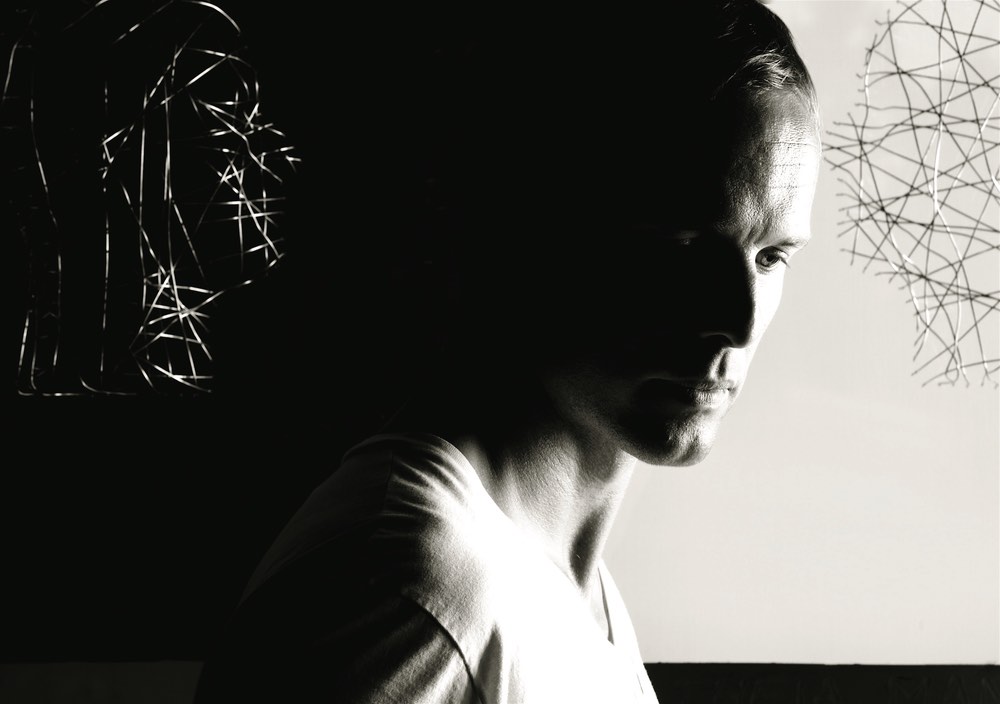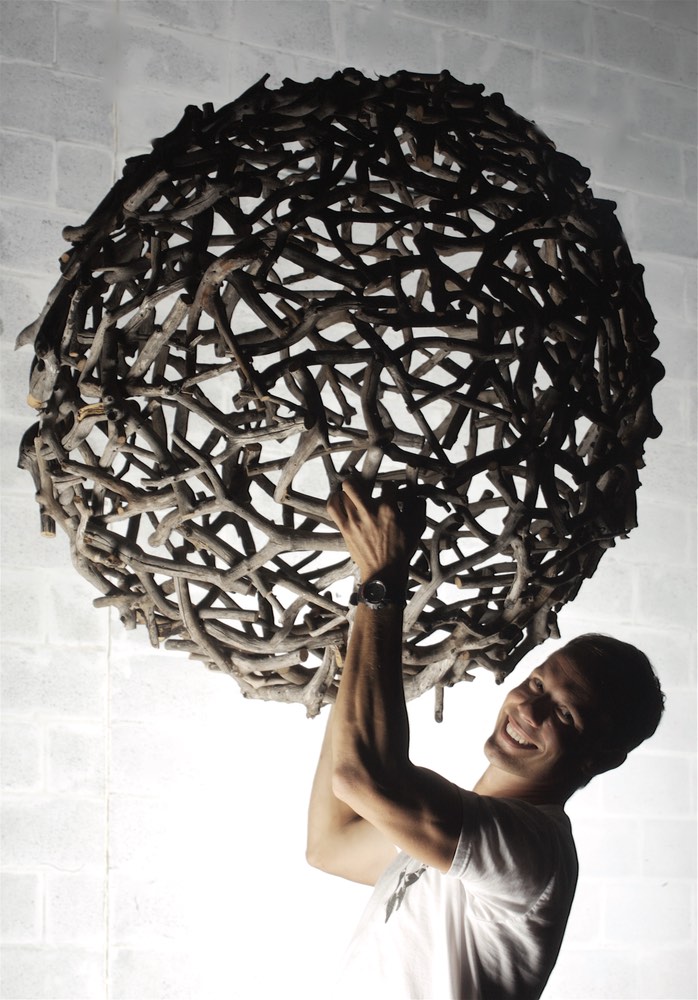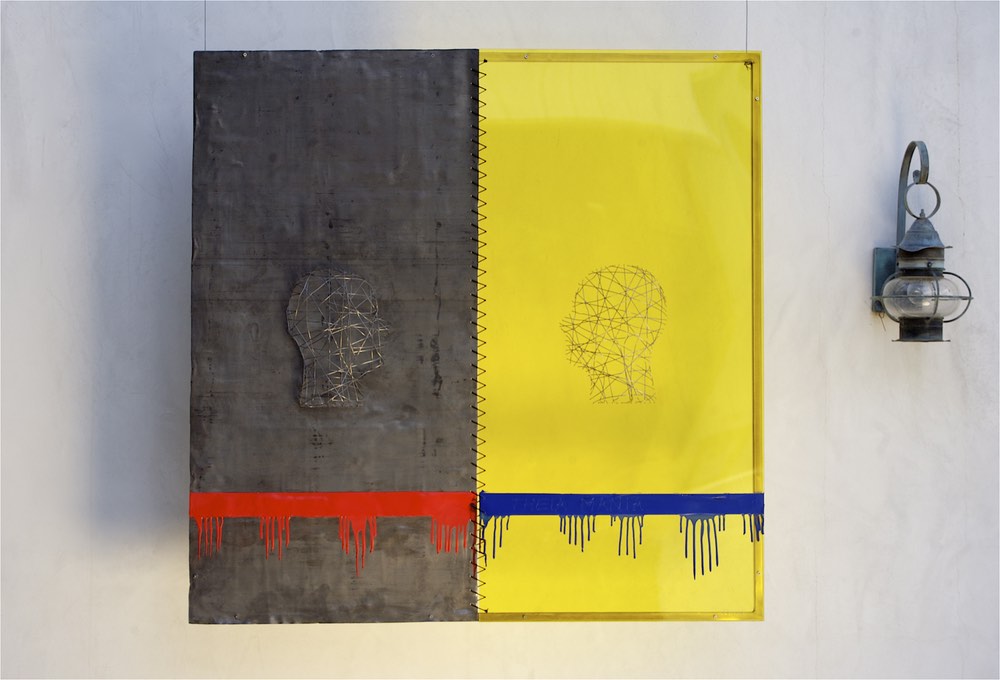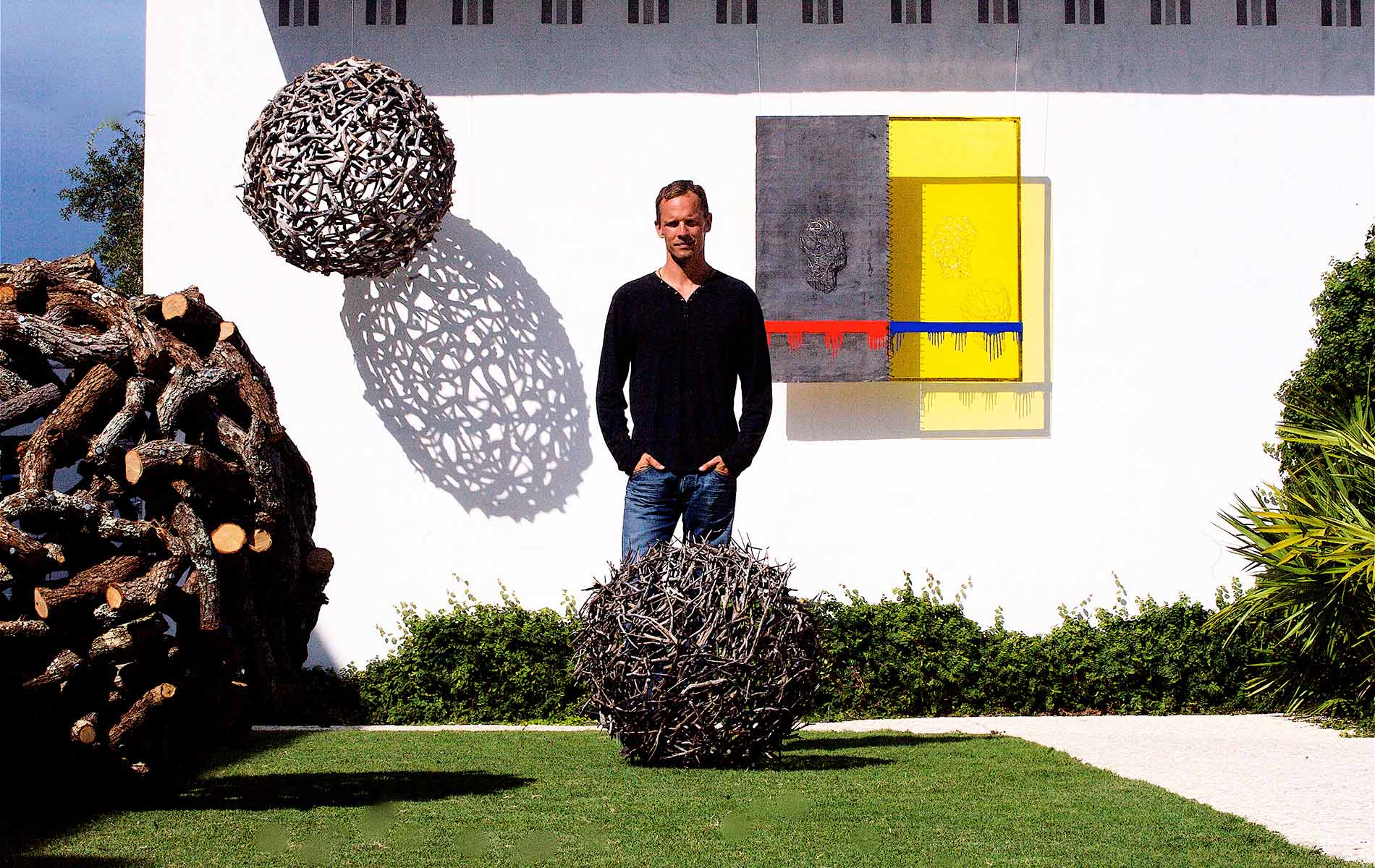
vie-magazine-stefan-daiberl
Artist Portrait Study
Stefan Daiberl’s The Ecdysis
Anne Hunter Conducts a Q&A with Stephan Daiberl | Photos by Michael Granberry
Stefan Daiberl, born in Augsburg, Germany, in 1970, moved to the United States in 1997 to pursue a master’s degree in business administration (MBA) from Babson College, which he received in 1999. In 2002, he left Interbrand, a New York consulting firm focused on marketing consulting and opened Craft, an interior design firm located on Scenic Highway 30A. In 2007, Daiberl abandoned his business pursuits in order to focus on the arts.
His first exhibition, The Ecdysis, considers the vulnerability of the creature during and right after ecdysis, which is the molting or shedding of the skin in arthropods. Stefan Daiberl’s The Ecdysis deals with issues of personal growth, psychological change, crisis and subsequent evolution.
Hunter: Some artists choose literature, canvas or film to express, but you have chosen objects. For me, that doubles the interest in your work because you do two very huge things. You are communicating something very important and then you are using natural objects that have those powers.
Daiberl: It is a predisposition that I have to connect experiences to objects and I record sensations in the context of objects that are around me. Past sensory experiences, visual, tactile, olfactory, or otherwise, now help me materialize physical works. I often unconsciously record moments of life that are important using objects that surround me as the recording device.
Hunter: What is The Ecdysis to you?
Daiberl: That’s a big one. The Ecdysis, the whole concept, sounds so premeditated and planned but is more like an unexpected end result of individual works that are in it, which was a result of my dealing with very individual situations that I found myself in at the time that I made each one of the pieces. Each one of these pieces followed a very strong personal impulse at the time that I made it. It was more like a therapeutic exercise to make these things in order to leave the skeleton behind. Each one of these pieces forms the whole unit, which was a surprise to me. Every piece represents a shedding.
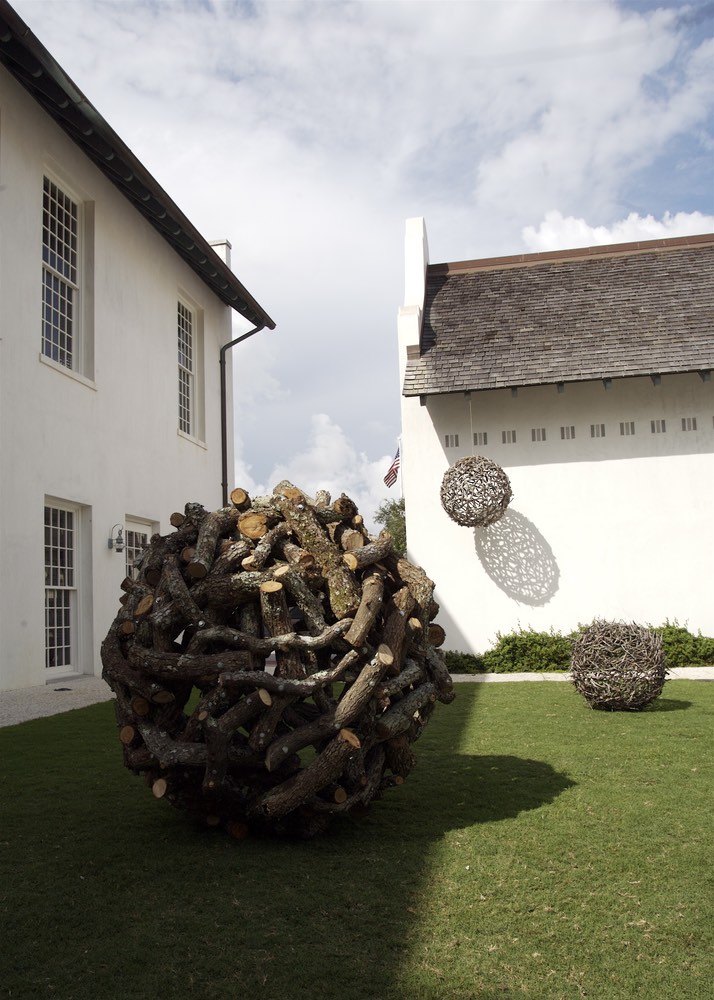
Hunter: How do you value art in your life now, as an artist, and why are you setting aside a degreed life and a successful business career to become an artist?
Daiberl: I think it was a result of an immediate need to survive for me, and I was looking for a mechanism that would keep me here and I very intuitively, like a child, played and materialized these things that made me and shaped who I am. It is the fascination of having a sensation of “this is who I am” and “this is what I just realized about something” and being able to make it into a thing — and then you step away from it and you have something hanging on the wall. And in that moment you realize that this is the translation of all of the things that went into me as a person. It feels good. I feel proud.
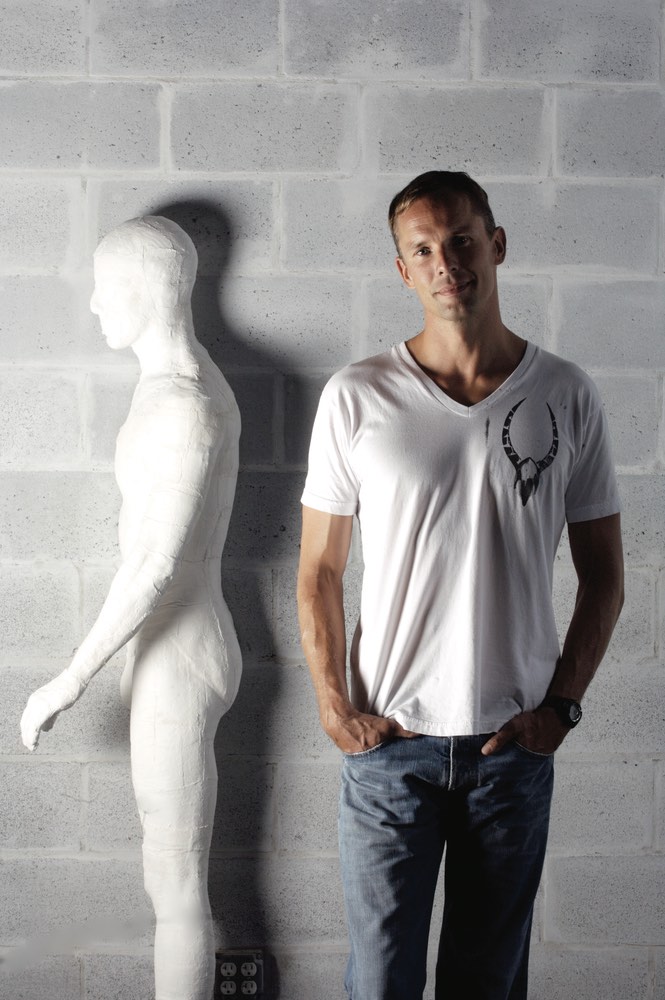
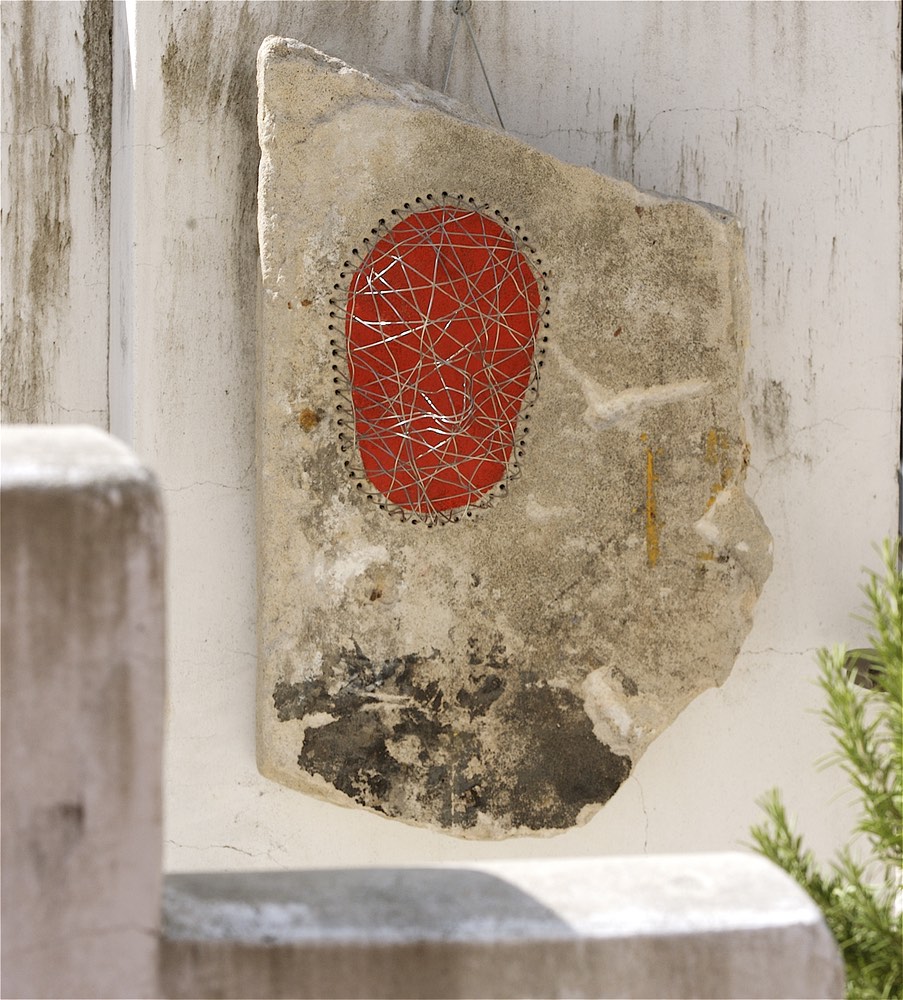
Hunter: Where do you find yourself relative to your art?
Daiberl: I think that I will never make something that is purposefully contrived to cause a reaction in somebody. I am interested in making things that utilize the potential connection between a human emotion and an object. I am going to keep investigating my own feelings and sensations to find these things that illustrate this linkage and that can bring people back to that human experience. I want to find things and assemble them in a way that is humanly meaningful. I am not going to intentionally teach but I am going to listen to what moves me. I am going to hope that the things that move me will appeal to others as well. I think that my art is going to be not very literal. I don’t like things that are “in your face” about their story. I just recently read something about Jackson Pollock and about how every dripped paint line was intended to represent an understanding of life that he had. The way things are assembled communicates human experience. Something thick can meet something thin, something metallic can meet something that is made of paper. You can pierce something that should not be pierced. I like making vast abstract things that on second sight illustrate something meaningful. That is ultimately what appeals to me, assembling things in a meaningful way. That is where I want to be.

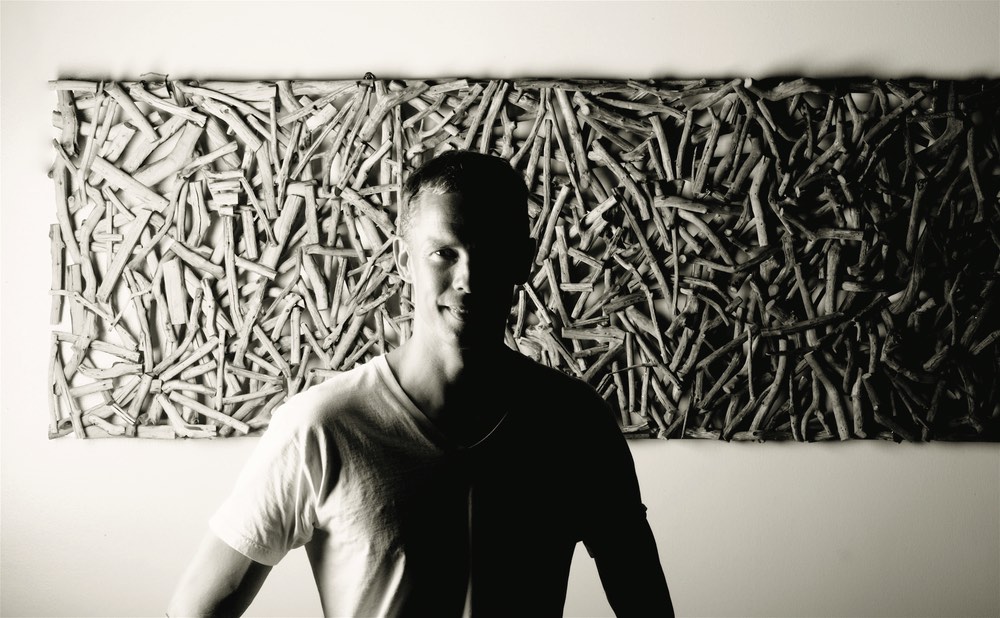
Echoing behind The Ecdysis is the realization that Daiberl has transcended his humanity and reassociated himself with the powers of nature, which are the powers that guide our lives. The purpose of the artist, who is also a teacher, is to communicate new understandings through his creative works, returning the jewel of understanding to the world through metaphor.
In Daiberl’s case, as artist and teacher, he offers a great lesson to us all. The example of one who has opted to sacrifice the physical desires and fears to discover what best fosters the flowering of our humanity, our contemporary life, and fortunately for us, to that one thing he is dedicating himself.
— V —
Share This Story!
KEEP UP WITH THE LATEST STORIES FROM VIE



